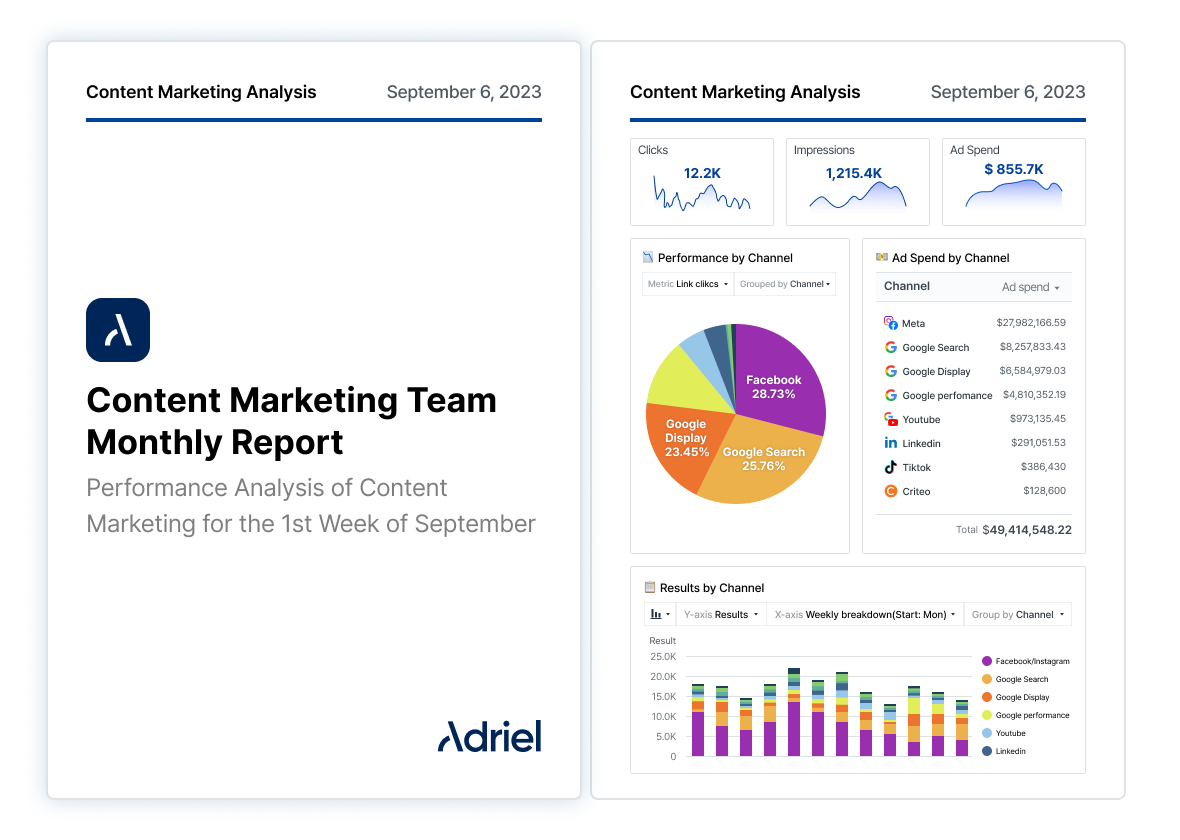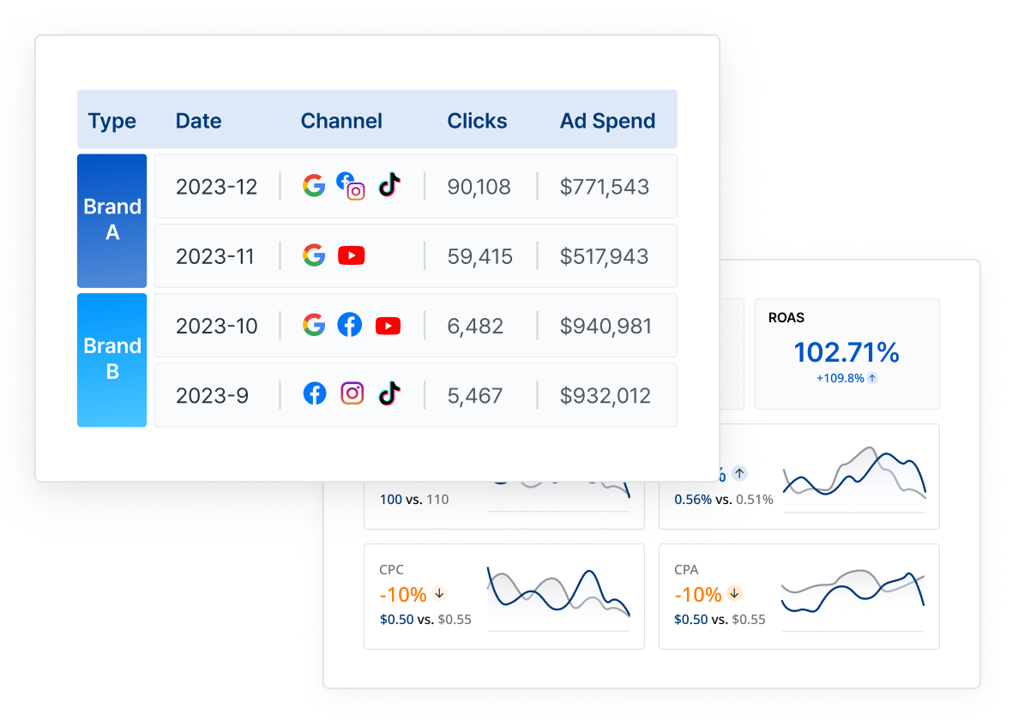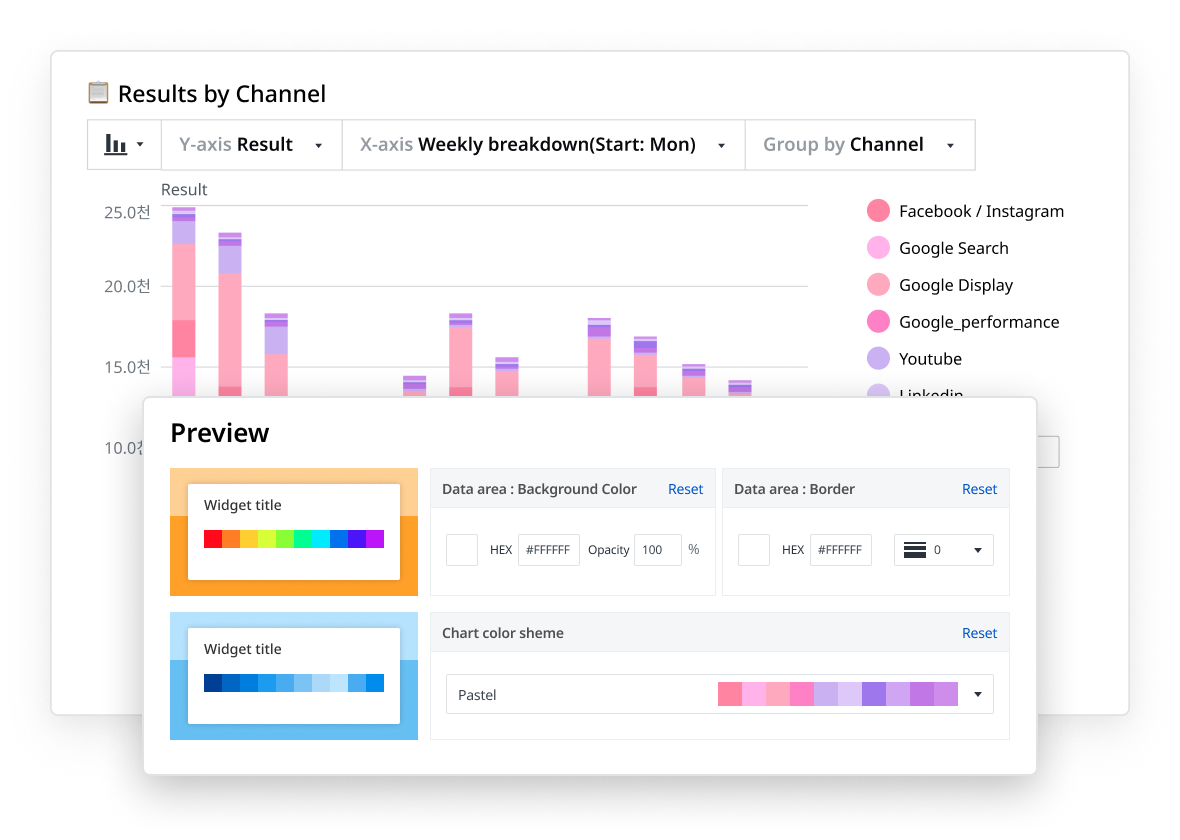Refer a partner and get paid! Earn 20% of all qualifying subscriptions referred to our team 👉

Learn More
Grow your channel with an all-in-one YouTube dashboard.
Track subscribers, views, and likes in real-time. Get unique insights for growth.



A YouTube channel dashboard is a centralized platform that aggregates and visualizes channel performance and video performance in one place.
It provides a comprehensive overview of various metrics such as views, likes, shares, and subscriber growth so you can deeply understand your video marketing efforts and make data-driven decisions.
On Adriel’s YouTube Analytics dashboard, you can track your most important metrics in real-time, set custom alerts for when they trend up or down, and adjust your content strategy based on unique insights.
Creating a YouTube dashboard is as easy as 1-2-3 with Adriel. You just need to link your YouTube account to the dashboard and you’ll be able to see all your YouTube data in a matter of minutes.
No coding and technical knowledge required.

Sign up for Adriel with your email after your demo.
You can then select a pricing plan that suits your needs.

Adriel supports integrations with up to 650+ data sources, including ad platforms, analytics tools, and social media channels like:
And if you don’t see an integration that we support natively, we can create custom integrations just for you.

Use our ready-made templates to instantly see all your KPIs in minutes.
Or, start from a blank page and choose your data visualization widgets and graph types.

If you’re a marketing agency, you want to be able to present different sets of information to different stakeholders.
Set up different views for each role or client on Adriel with different access restrictions in just a few clicks.

Need paid media reports to share with clients or the C-suite team? Determine your brand visuals, colors, and client logos, and download reports as PDFs or CSVs or get live links in minutes.
A YouTube channel dashboard shows an overview of how your YouTube videos are doing and how much your channel is growing. Some common metrics include:






A measure of how often your YouTube channel has been viewed by users, reflecting its reach and popularity.


A measure of how often your YouTube channel has been viewed by users, reflecting its reach and popularity.


The total number of videos uploaded to your YouTube channel, showcasing the breadth of content available to viewers.


The cumulative minutes or hours that viewers have spent watching your videos, revealing the depth of engagement with your content.


Likes, comments, shares, and other interactive actions, highlighting how viewers are interacting with your videos.


A measure of how effectively your YouTube content drives viewers to take a desired action, such as making a purchase or signing up for more information.




When reporting Meta Ads, you will want to visualize Instagram Ads and Facebook Ads performance side-by-side to understand how each platform is contributing to your digital marketing goals. Here’s how it looks like on Adriel’s report template:





Integrate all your media channels into one marketing reporting dashboard. Curious to know how your Meta, Google, or TikTok Ads are performing? Connect all of these platforms to Adriel, and in less than 5 minutes, show all of your paid campaign results in one unified dashboard. See our integrations page for more information.


You can start from a blank page to create a marketing reporting dashboard, but what if you don’t have time? Our extensive pre-made marketing reporting dashboard library has everything you might need. Try Adriel, and you’ll have more time to research ways to increase conversion or optimize your landing pages.
Our software was expertly designed with powerful functions for marketers. But everything can be customized. Adriel’s flexibility allows you to change all aspects of the dashboard design and appearance. Impress your clients or executives with a professional marketing reporting dashboard report for an expert brand image.













.png)

With Adriel’s YouTube channel dashboard, you have the tools and insights you need to optimize your channel's performance, engage your audience effectively, and achieve your goals on the platform.
You can:

YouTube offers multiple video content types for brands to get started. Here are some of them:
Each format offers unique engagement opportunities and can be leveraged according to your marketing goals and audience preferences.
For instance, Shorts might be perfect for quick tips or fun behind-the-scenes glimpses, while Live streams could be utilized for product launches or live Q&A sessions to build community and engagement.
Choose the formats that align with your strategy and audience behavior for optimal impact.

You can create a YouTube channel dashboard in two main ways:
Use Adriel's plug-and-play YouTube dashboard template.
Simply connect your YouTube channel and Adriel's ready-made template will automatically populate with essential metrics like views, watch time, and subscriber growth. No manual setup required, making it quick and hassle-free.
Alternatively, you can create a dashboard manually by accessing YouTube Analytics.
Navigate to your YouTube Studio dashboard and select Analytics.
From there, customize your dashboard by choosing metrics like traffic sources, audience demographics, and video performance.
While more time-consuming than Adriel's template, this method offers flexibility in selecting specific metrics tailored to your needs.

When it comes to visualizing a YouTube channel dashboard, we've found a few types of visuals that work really well (which we used in our template):
These visuals make it easy to understand how your YouTube channel is doing and where you might need to focus your efforts for better results.